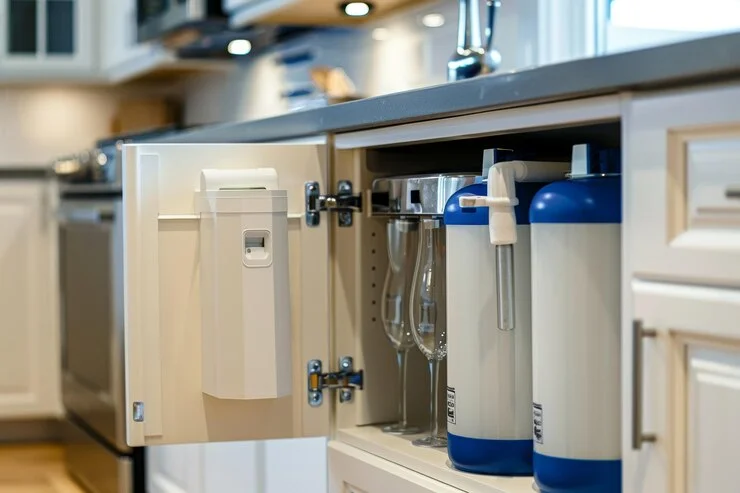Reverse osmosis (RO) systems are an essential part of modern water purification, offering clean and safe drinking water for homes, businesses, and industrial applications. Central to these systems are reverse osmosis water maker pumps, which ensure efficient water flow and optimal filtration. This guide provides a detailed look at how these pumps work, their benefits, and how to choose the right one for your needs.
What Is a Reverse Osmosis Water Maker Pump?
A reverse osmosis water maker pump is a device designed to enhance the performance of an RO system. It helps push water through the semi-permeable membrane under pressure. This ensures better filtration and reduces water waste. These pumps are especially useful in areas with low water pressure.
How Does a Reverse Osmosis System Work?
Reverse osmosis works by using a membrane to remove contaminants from water. The membrane blocks impurities such as:
- Dirt and sediment
- Chemicals like chlorine
- Heavy metals like lead and mercury
- Microorganisms such as bacteria and viruses
The pump is essential for sustaining the pressure needed to carry out the filtration process effectively.
Why Are Pumps Necessary in Reverse Osmosis Systems?
Without sufficient pressure, water cannot pass effectively through the membrane. Here’s why pumps are essential:
Improves Efficiency: Pumps enhance the filtration process, ensuring more contaminants are removed.
Saves Water: They reduce the amount of water wasted during filtration.
Better Performance in Low-Pressure Areas: If your water supply pressure is low, a pump ensures your RO system works effectively.
Types of Reverse Osmosis Pumps
1. Permeate Pumps
These pumps help reduce water waste by redirecting unused water back into the system. They are energy-efficient and ideal for homes.
2. Booster Pumps
Booster pumps increase the inlet water pressure, ensuring the RO system operates optimally. They are commonly used in areas with low water pressure.
3. Delivery Pumps
These are used to improve water flow in systems where water needs to be delivered to multiple outlets or long distances.
Benefits of Using Reverse Osmosis Water Maker Pumps
Benefits of Using Reverse Osmosis Water Maker Pumps
Enhanced Filtration Quality
Pumps ensure contaminants are removed effectively, delivering purer water.
Lower Operating Costs
By improving efficiency and reducing water waste, pumps help cut down on water bills.
Longer Membrane Life
Consistent pressure prevents damage to the membrane, extending its lifespan.
Better Water Flow
Enjoy a steady supply of clean water, even in low-pressure conditions.
Choosing the Right Pump for Your Reverse Osmosis System

When selecting a pump, consider the following factors:
- Water Pressure: Determine your system’s pressure requirements.
- Flow Rate: Match the pump’s flow rate to your system’s capacity.
- Energy Efficiency: Look for energy-saving models to reduce power consumption.
- Noise Levels: Opt for quieter pumps if the system is installed in living areas.
- Durability: Choose pumps made from high-quality materials for longevity.
Installation and Maintenance Tips
Professional Installation
While some pumps are easy to install, hiring a professional ensures optimal performance.
Regular Cleaning
Clean the pump and system components to prevent clogs and maintain efficiency.
Check for Leaks
Inspect connections regularly to avoid water loss.
Replace Parts as Needed
Pumps and membranes wear out over time. Replace them promptly to keep the system running smoothly.
Common Issues and Troubleshooting
Low Pressure: Check for clogs in the filters or leaks in the system. Replace the pump if necessary.
Noisy Operation: Excessive noise may indicate wear and tear. Tighten fittings or replace damaged components.
Inconsistent Water Flow: Ensure the pump is compatible with your system’s flow rate requirements.
Environmental Impact of Reverse Osmosis Systems
While RO systems offer clean water, they can also waste water during filtration. Using a high-quality pump can minimize this waste, making your system more environmentally friendly.
Reverse Osmosis Pumps in 2024: What’s New?
The latest advancements in pump technology include:
Smart Pumps: Equipped with sensors to monitor pressure and flow rates automatically.
Energy-Efficient Designs: New models use less power while delivering better performance.
Compact Models: Smaller, quieter pumps fit seamlessly into modern RO systems.
Final Thoughts
Reverse osmosis water maker pumps are essential for achieving clean, safe, and efficient water filtration. Whether you’re looking to improve your home’s water quality or manage a commercial system, choosing the right pump can make all the difference. With regular maintenance and the latest technology, your RO system will provide you with pure water for years to come.
Frequently Asked Questions (FAQs)
Q1. How long does a reverse osmosis filter take?
A reverse osmosis system usually takes about 2 to 4 hours to filter water. The exact time depends on the system size and water pressure. Larger systems with better pressure may filter water faster.
Q2. How do you increase RO water output?
To increase RO water output, you can add a booster pump to the system. This pump helps increase water pressure, making the filtration process faster. Regularly cleaning the filters also helps improve output.
Q3. How to filter water with reverse osmosis?
Firstly, water is forced through a specialized membrane that filters out salt and impurities, allowing only clean water to pass through while trapping unwanted particles process creates fresh drinking water.
Q4. Do I need a pump for my reverse osmosis system?
You may need a pump if your water pressure is too low for the system to work well. A pump helps increase the pressure so the water can be filtered more effectively. Not all systems require a pump, though.
Q5. What kind of pump is used in reverse osmosis?
A booster pump is often used in reverse osmosis systems to increase water pressure. This pump helps the system filter water more quickly and efficiently. It’s important for areas with low water pressure.
Q6. Does osmosis require a pump?
Regular osmosis doesn’t need a pump because it’s a natural process. However, reverse osmosis systems use a pump to push water through a membrane. This is necessary to filter out impurities and salt.










